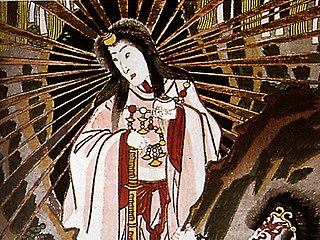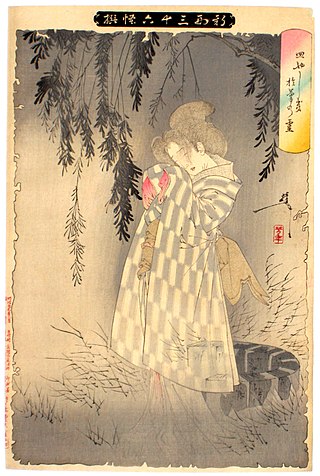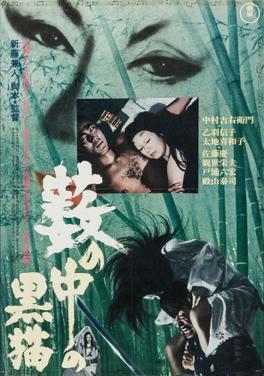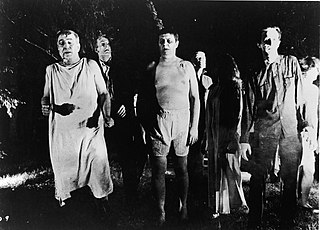
Horror is a film genre that seeks to elicit fear or disgust in its audience for entertainment purposes.

Horror is a genre of fiction that is intended to disturb, frighten or scare. Horror is often divided into the sub-genres of psychological horror and supernatural horror, which are in the realm of speculative fiction. Literary historian J. A. Cuddon, in 1984, defined the horror story as "a piece of fiction in prose of variable length... which shocks, or even frightens the reader, or perhaps induces a feeling of repulsion or loathing". Horror intends to create an eerie and frightening atmosphere for the reader. Often the central menace of a work of horror fiction can be interpreted as a metaphor for larger fears of a society.
Survival horror is a subgenre of horror games. Although combat can be part of the gameplay, the player is made to feel less in control than in typical action games through limited ammunition or weapons, health, speed, and vision, or through various obstructions of the player's interaction with the game mechanics. The player is also challenged to find items that unlock the path to new areas and solve puzzles to proceed in the game. Games make use of strong horror themes, such as dark mazelike environments and unexpected attacks from enemies.

Tentacle erotica is a type of pornography most commonly found in Japan that integrates traditional pornography with elements of bestiality, fantasy, horror, and science fiction. It is found in some horror or hentai titles, with tentacled creatures having sexual intercourse, predominantly with females or, to a lesser extent, males. Tentacle erotica can be consensual but mostly contains elements of rape.

An exploitation film is a film that tries to succeed financially by exploiting current trends, niche genres, or lurid content. Exploitation films are generally low-quality "B movies", though some set trends, attract critical attention, become historically important, and even gain a cult following.

Yūrei are figures in Japanese folklore analogous to the Western concept of ghosts. The name consists of two kanji, 幽 (yū), meaning "faint" or "dim" and 霊 (rei), meaning "soul" or "spirit". Alternative names include Bōrei (亡霊), meaning ruined or departed spirit, Shiryō (死霊), meaning dead spirit, or the more encompassing Yōkai (妖怪) or Obake (お化け). Like their Chinese, Korean, and Western counterparts, they are thought to be spirits barred from a peaceful afterlife.

Shochiku Co., Ltd. is a Japanese entertainment company. It started its business in 1895 by managing kabuki theaters in Kyoto, and in 1914, it also acquired ownership of the Kabuki-za theater in Tokyo. In 1920, Shochiku entered the film production industry and established the Kamata Film Studio. Currently, it is considered one of Japan's Big Four film studios and is the oldest among the Big Four. Shochiku is a member of the Motion Picture Producers Association of Japan (MPPAJ).
Kaidan is a Japanese word consisting of two kanji: 怪 (kai) meaning "strange, mysterious, rare, or bewitching apparition" and 談 (dan) meaning "talk" or "recited narrative".

Yotsuya Kaidan (四谷怪談), the story of Oiwa and Tamiya Iemon, is a tale of betrayal, murder and ghostly revenge. Arguably the most famous Japanese ghost story of all time, it has been adapted for film over 30 times and continues to be an influence on Japanese horror today. Written in 1825 by Tsuruya Nanboku IV as a kabuki play, the original title was Tōkaidō Yotsuya Kaidan. It is now generally shortened, and loosely translates as Ghost Story of Yotsuya.

Banchō Sarayashiki is a Japanese ghost story (kaidan) of broken trust and broken promises, leading to a dismal fate. Alternatively referred to as the sarayashiki tradition, all versions of the tale revolve around a servant, who dies unjustly and returns to haunt the living. Some versions take place in Harima Province or Banshū (播州), others in the Banchō (番町) area in Edo.

Kuroneko is a 1968 Japanese historical drama and horror film directed by Kaneto Shindō, and an adaptation of a supernatural folktale. Set during a civil war in feudal Japan, the film's plot concerns the vengeful spirits, or onryō, of a woman and her daughter-in-law, who died at the hands of a band of samurai. It stars Kichiemon Nakamura, Nobuko Otowa, and Kiwako Taichi.

A monster movie, monster film, creature feature or giant monster film is a film that focuses on one or more characters struggling to survive attacks by one or more antagonistic monsters, often abnormally large ones. The film may also fall under the horror, comedy, fantasy, or science fiction genres. Monster movies originated with adaptations of horror folklore and literature.

A zombie is a mythological undead corporeal revenant created through the reanimation of a corpse. In modern popular culture, zombies are most commonly found in horror and fantasy genre works. The term comes from Haitian folklore, in which a zombie is a dead body reanimated through various methods, most commonly magical practices in religions like Vodou. Modern media depictions of the reanimation of the dead often do not involve magic but rather science fictional methods such as carriers, fungi, radiation, mental diseases, vectors, pathogens, parasites, scientific accidents, etc.

Zombie apocalypse is a subgenre of apocalyptic and post-apocalyptic fiction in which society collapses due to overwhelming swarms of zombies. Typically only a few individuals or small bands of survivors are left living. In some versions, the reason the dead rise and attack humans is unknown, in others, a parasite or infection is the cause, framing events much like a plague. Some stories have every corpse rise, regardless of the cause of death, whereas others require exposure to the infection.

A zombie film is a film genre. Zombies are fictional creatures usually portrayed as reanimated corpses or virally infected human beings. They are commonly portrayed as cannibalistic in nature. While zombie films generally fall into the horror genre, some cross over into other genres, such as action, comedy, science fiction, thriller, or romance. Distinct subgenres have evolved, such as the "zombie comedy" or the "zombie apocalypse". Zombies are distinct from ghosts, ghouls, mummies, Frankenstein's monsters or vampires, so this article does not include films devoted to these types of undead.
A horror game is a video game genre centered on horror fiction and typically designed to scare the player. The term may also be used to describe tabletop games with horror fiction elements.

Zombies are recurring antagonists within the fictional universe of Japanese video game company Capcom's multimedia franchise Resident Evil, known in Japan as Biohazard. First appearing in the 1996 video game Resident Evil, they are mutated creatures with cannibalistic urges and severe epidermal necrosis, and their origins are explained from a scientific perspective. In contrast to zombies in other horror and fantasy genre works where they are traditionally presented as corporeal revenants with mythological and supernatural origins, zombies in the Resident Evil series are usually created through the use of biological weaponry, genetic manipulation and/or parasitic symbiosis. Subsequent sequels have featured other types of zombies as well as related creatures which are presented as more agile, vicious, and intelligent opponents.

Kaibyō are supernatural cats in Japanese folklore. Examples include bakeneko, a yōkai commonly characterized as having the ability to shapeshift into human form; maneki-neko, usually depicted as a figurine often believed to bring good luck to the owner; and nekomata, referring either to a type of yōkai that lives in mountain areas or domestic cats that have grown old and transformed into yōkai.
One Hundred Ghost Stories is a series of ukiyo-e woodblock prints made by Katsushika Hokusai (1760–1849) in the Yūrei-zu genre circa 1830. He created this series around the same time he was creating his most famous works, the Thirty-six Views of Mount Fuji series. There are only five prints in this series, though as its title suggests, the publisher, Tsuruya Kiemon, and Hokusai wanted to make a series of one hundred prints. Hokusai was in his seventies when he worked on this series, and though his most famous impressions are landscape and wild-life works, he was attuned to the superstitions of the Edo period. This culminated in him creating these yokai prints of popular ghost stories being told at the time. The prints show scenes from such stories, that could be recited during the game of Hyakumonogatari Kaidankai.














